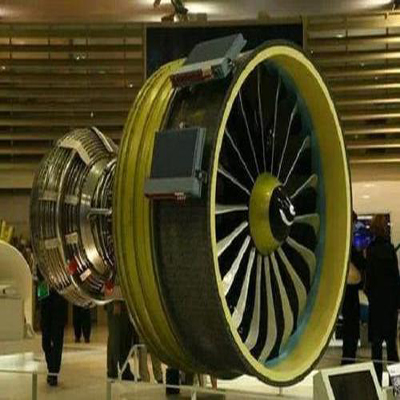- Home
- Products
- Elementary
- Boride Powder
- 3D Printing Powder
- Sulfide Powder
- Oxide Powder
- Carbide powder
- Nitride Powder
- Silicide Powder
- Hydride Powder
- Telluride Powder
- Selenide Powder
- Stearic Acid Series
- Phosphide Powder
- Nanoparticles
- Metal Alloy
- MAX Phase
- Lithium Battery Anode
- Surfactant
- Molecular sieves
- Concrete Admixtures
- News
- Answers
- Contact
- About
News
- 0
- 0
About Silicon Carbide Ceramics Some Things You Dont Know
If you are looking for high-quality products, please feel free to contact us and send an inquiry, email: brad@ihpa.net
Silicon carbide ceramic residential or commercial properties
Silicon carbide porcelains have high hardness, high melting factor (2400 ℃), high wear resistance as well as rust resistance, as well as outstanding oxidation resistance, high temperature stamina, chemical stability, thermal shock resistance, thermal conductivity as well as great air rigidity. And so, it has been widely made use of in power, metallurgy, equipment, oil, chemical, air travel, aerospace, defense as well as other areas.

Black silicon carbide and environment-friendly silicon carbide: The unpleasant market constantly splits silicon carbide right into black carbonized laurel and eco-friendly silicon carbide according to color, both of which are hexagonal crystals, and also all come from α& alpha;
-SiC. Black silicon carbide has about 98.5% SiC. Black silicon carbide is constructed from quartz sand, petroleum coke as well as top quality silica as the primary resources, as well as is heated by electrical furnace at high temperature level. Its firmness is in between corundum as well as ruby, the mechanical stamina is greater than corundum, and also it is breakable and sharp. Its sturdiness is greater than that of environment-friendly silicon carbide, and also it is primarily used to process materials with low tensile stamina, such as glass, ceramics, stone, refractory materials, cast iron and non-ferrous metals.
Eco-friendly silicon carbide consists of even more than 99% SiC. Green silicon carbide is made of petroleum coke and also high-grade silica. It is added with salt as an additive as well as is smelted by heat heating system. It is self-sharpening as well as is mainly made use of for machining difficult alloys, alloys and optical glass. It is additionally used for wear-resistant cylinder linings and fine-grained high-speed steel tools.

Silicon carbide ceramic usage: The strong covalent bond of SiC is the root cause of a collection of superb residential or commercial properties of SiC ceramics, but it additionally brings problems in sintering. The covalent bond is too solid, which hinders the sintering densification of SiC ceramics. Because of this, the sintering temperature level has actually to be increased., which boosts the expense and also limits its application in industry.
From the point of sight of thermodynamics, the decrease of cost-free energy triggered by the cluster of the initial powder throughout sintering is the main driving force for densification. However, the totally free power of the SiC grain limit is relatively high, leading to a reduction in the complimentary power of the powder even if the jumble becomes a solid-solid interface from the solid-gas user interface. The smaller the totally free energy distinction is, the smaller the driving force of the sintering process is. For that reason, the SiC powder is harder to be sintered than various other porcelains. The current usual technique is to include sintering aid, decrease the original powder fragment size and also pressurize. Change its complimentary energy and advertise the densification of SiC.
From the perspective of kinetics, the major mass transfer mechanisms in the sintering process are: dissipation and also condensation, viscous circulation, surface diffusion, grain limit or lattice diffusion and plastic deformation. The solid covalent bond of SiC results in slower solid-phase mass transfer price such as latticework diffusion and also surface diffusion, while gas phase mass transfer calls for heat to advertise powder disintegration. The decomposition temperature of SiC depends on 2500 °& deg; C, so relying on gas phase mass transfer to realize porcelains Densification is impossible. Consequently, the existing sintering procedure primarily achieves the thick circulation by adding a sintering aid to boost the strong stage diffusion price of SiC or to form a thick fluid glass phase-assisted SiC.

SiC porcelains are highly pure as well as can raise the thermal conductivity of SiC ceramics without various other contaminations. Nevertheless, in the sintering process, sintering help must be presented to minimize the sintering temperature level as well as increase the density. How to resolve the opposition in between both is the sintering of high thermal conductivity SiC porcelains. Problems and also top priorities.
Al2O3 porcelains have relatively reduced sintering temperature level, affordable as well as good electric insulation performance. They have actually been commonly used, yet their thermal conductivity is low, and their application in high-power circuits is restricted.
BeO ceramics have great dielectric properties and also are used as high-heat-conducting substratum products in some areas. Nevertheless, because of the poisoning of BeO, Europe, the United States, Japan as well as various other locations have actually begun to release laws limiting the sales and also advancement of digital items including BeO.
AlN porcelains have exceptional thermal and electric insulation and also low dielectric consistent, making them suitable for high power circuits. Nonetheless, the sintering temperature of AlN porcelains is expensive, resulting in a complex preparation process and also high price, as well as has actually not gone through large manufacturing as well as application. And also AlN is prone to hydrolysis reaction, and its dependability is bad in damp environments.
SiC ceramics have low thickness, high mechanical strength, excellent oxidation resistance, put on resistance, exceptional thermal shock resistance, little thermal expansion coefficient and also high thermal development coefficient matching with the chip. They are resistant to chemical rust and also have great advancement in the field of digital items. And the application prospects can meet the needs of high performance, small size, lightweight as well as high reliability of digital devices in the future.
Luoyang Technology Co., Ltd is a professional Silicon carbide ceramic maker with over 12 years experience in chemical items r & d. If you are looking for excellent quality Silicon carbide ceramic, please feel complimentary to contact us as well as send out an inquiry.
Inquiry us